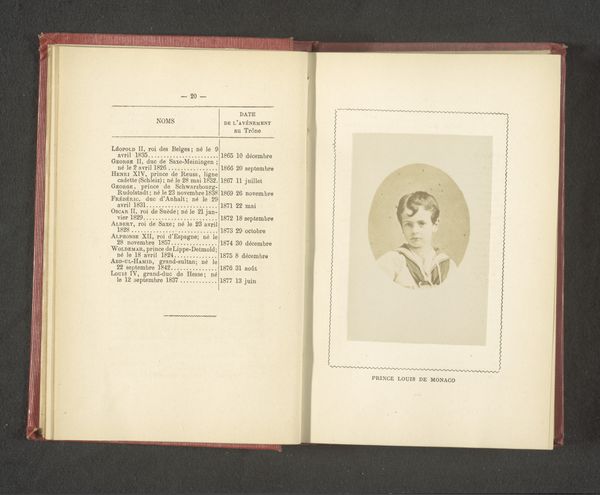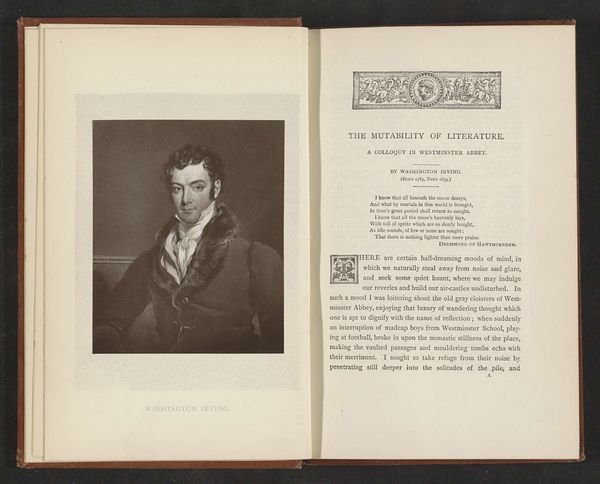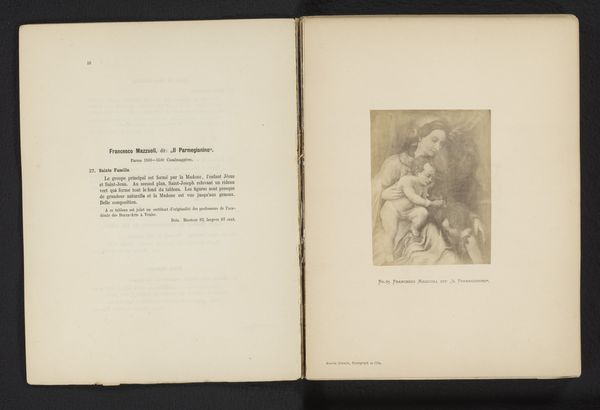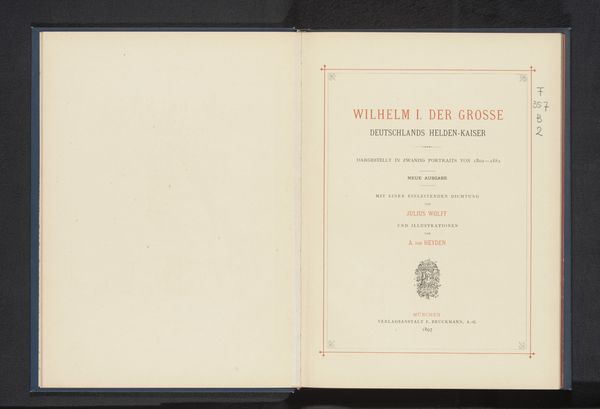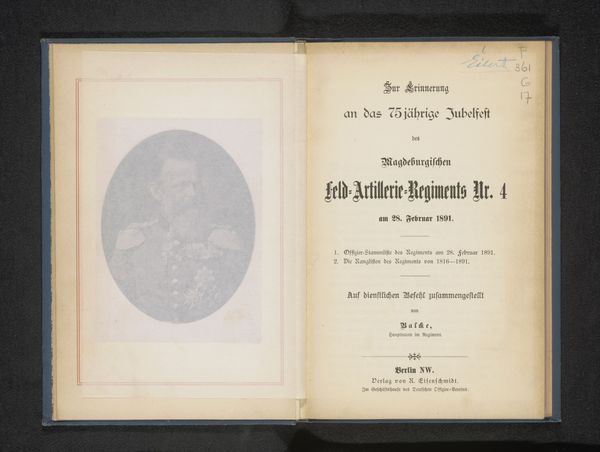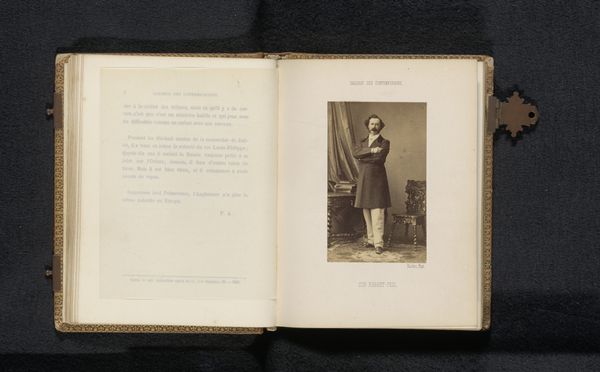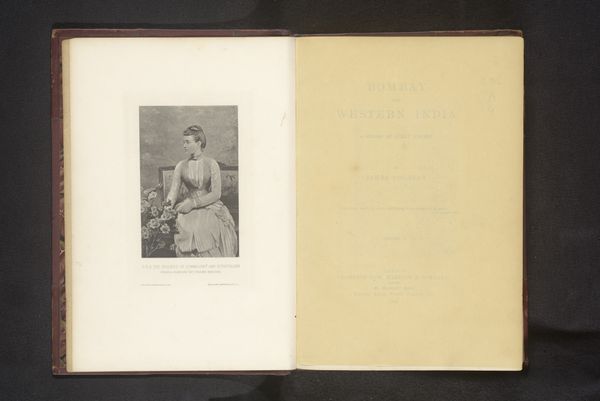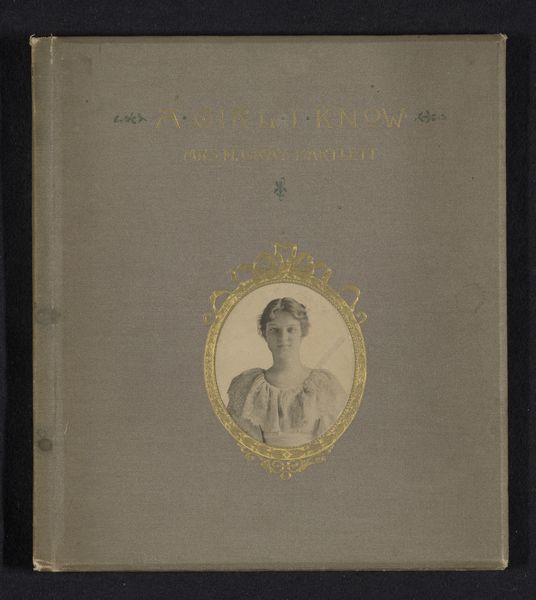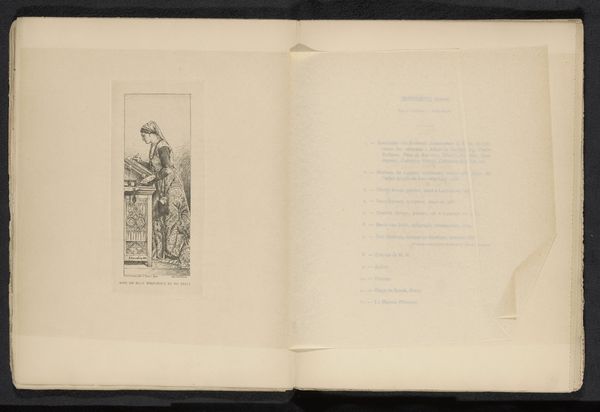
Die Buchdruckerei zu Beromüntser im fünfzehnten Jahrhundert : eine Festschrift zur Jubelfeier im Jahre 1870 1871
0:00
0:00
print, photography
#
portrait
#
script typeface
#
type repetition
#
aged paper
#
paper non-digital material
#
paperlike
# print
#
personal journal design
#
photography
#
thick font
#
history-painting
#
academic-art
#
letter paper
#
paper medium
#
historical font
Dimensions: height 266 mm, width 170 mm, thickness 3 mm
Copyright: Rijks Museum: Open Domain
Curator: This object before us is a commemorative book, "Die Buchdruckerei zu Beromünster im fünfzehnten Jahrhundert: eine Festschrift zur Jubelfeier im Jahre 1870," published in 1871. Editor: It looks like a photograph of an open book spread. There’s a formal portrait on the left page and what appears to be the title page on the right. The aged paper evokes a strong sense of historical gravitas. Curator: Precisely. The physicality of this printed object is central to its meaning. Notice the typography used for the title page—the selection of thick fonts for the heading in contrast to the standard script highlights a connection to the manual printing process celebrated within this commemorative book. How would you interpret this visually? Editor: The portrait presents a contemplative figure. He is portrayed in what appears to be period-accurate attire and with clasped hands—gestures implying dedication, humility, perhaps a silent reverence for the printed word, an important visual theme given the text. It has the emotional quality of early Renaissance paintings with pious figures Curator: Indeed. The creation of such books would require intense coordination of labor. The paper quality alone is notable and suggestive of significant expenditure in terms of money and production. And remember, photographic portraits themselves involved a dedicated practice and expensive materials. The layering suggests conscious material choices. Editor: Considering the historical context of print's emergence, such an individual—perhaps a scribe or printer—would be a symbolic figure bridging the medieval world and the age of mechanical reproduction. Also note, how repetition of design from letters and their impression would have influenced aesthetics. Curator: Good point about production. The contrast also implies shifts in knowledge production; early methods using expensive handcrafted volumes against a system celebrating and looking back towards the new printing possibilities. The academic-art style within a portrait points to who had access and influence to knowledge at the time Editor: Ultimately, its imagery creates a symbolic association between craft, reverence, and remembrance. What remains unstated is how this affects cultural values, but you know that that exists. Curator: Exactly. It speaks to how material culture carries within it ideologies of labor and the valuation of information at a specific point in history. The value and beauty in print Editor: A compelling artifact, made more valuable, as you mentioned, with a deep awareness of social context.
Comments
No comments
Be the first to comment and join the conversation on the ultimate creative platform.


